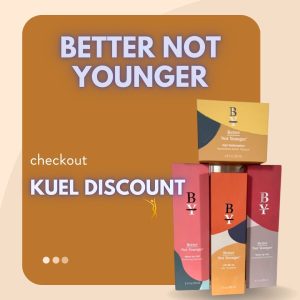Beauty Expert: Elise Marquam-Jahns
As I heard one woman say recently: “I don’t think a 20-year-old can ever really understand 45+ year old skin.”
And as one beauty expert has said: “The cheeks we were born with aren’t the same cheeks we see in the mirror once we’re over fifty. Like a host of other body parts, they tend to move south as our birthdays move north.” But, the wonderful news is that we’re older and wiser, so instead of wishing to be who we were, we can embrace the adventure of who we can become.
Let me first say that I am not suggesting that you do all eight of the techniques I’ll be discussing in this article. I’ll be sharing a variety of options from which you can choose based on your particular needs and challenges. There may be just one of these options that fits your needs –or perhaps there are two or three that would be especially valuable.
“Lifestyle factors such as stress, sun exposure, smoking and drinking can increase the problem.”
Issues Under-Eye Area:
So let’s start with our eyes. There are many possible issues we can have in our under-eye area: dark circles, puffiness and bags, and a sunken area caused by loss of volume. Let’s focus first on the bluish/purple dark rings under our eyes which can be caused by a host of issues ranging from heredity to allergies but can become even more of a problem as we get older because the skin under the eye gets thinner. Lifestyle factors such as stress, sun exposure, smoking and drinking can increase the problem.
I think most of us first think of concealer as the makeup go-to product of choice to help this area. But in fact, we can best camouflage this area by applying a color that really cancels out that bluish-purple color before applying concealer.
And that would be a peach or salmon-toned color corrector. Whether a light peach color or a darker peach or salmon color will work best for you depends on how light or dark your skin is.
1. Colors For Your Skin:
For lighter skin tones, a lighter peach color would work and go deeper into the peach/salmon family of colors for deeper skin. The best way to apply the color corrector is to dot it on just in the area where you have the bluish/purple circles.
Then go back in with a concealer that is one shade lighter than your skin tone and gently pat the concealer on over the peach-toned color corrector. It’s important to press it on—rather than rub it on—so the color corrector underneath won’t be disturbed. In the video I’ll demonstrate on one of my eyes so you can see the difference between the eye that has a color corrector and concealer on it and the other eye which doesn’t.
I’ll be using Colorescience’s Total Eye Three-in-One Therapy Color Corrector in the Original shade and L’Oreal’s Age Perfect Radiant Concealer in the shade Ivory. I think you’ll be able to see what a difference the color corrector with the concealer over it makes.
Be sure to check out Elise’s YouTube channel which specifically focuses on makeup tips, techniques, and product reviews for those of us 45+. Don’t forget to subscribe!
“Eye creams that contain caffeine can also help since they also help restrict the blood vessels and reduce swelling.”
Non-Makeup Things:
Puffiness and bags under the eyes can be caused by weakening muscles which enables fat to migrate. Fluid accumulates which causes the area to look puffy and eventually lines of demarcation we call eye bags appear. Three non-makeup things that we can do to help decrease the puffiness include reducing our sodium intake, applying a cold compress of a green teabag, or using a facial roller such as the one I’m using in the video.
If you want to see if a cool teabag compress can help, first place the teabags in hot water for a minute or so. Then squeeze them out to remove the water and put them into the refrigerator for 10-15 minutes. Then place one of the cool tea bags on each eye for 5-8 minutes. The combination of the coolness and the tannin in the tea can help constrict blood vessels and reduce swelling. Eye creams that contain caffeine can also help since they also help restrict the blood vessels and reduce swelling.
2. How We Apply Our Eyeliner Technique:
The second makeup technique in the eye area that can really make a difference for us is where and how we apply our eyeliner—both on the top eyelids and underneath our eyes. As you’ll see in the video, I have eyeliner on one eye and not on the other, so I’ll apply eyeliner on the eye without eyeliner—on both the bottom and top lid—after I talk about the technique.
Surprisingly, it can be most helpful to start underneath the eye with the eyeliner because this approach can help us create a natural upward pattern. In the video I’ll use an angled brush with dark brown eyeshadow from the Juvia’s Place Warrior Palette. I’m going to start at the outer part of the eye and then bring it up and out following the natural curve from underneath the eye so I’m creating a slight upward flick at the outer corner. This helps lift the eye area.
Softer-Look Makeup:
After doing this I don’t have much product left on my brush, so I’m going to take the eyeshadow I’m using as eyeliner and bring it just slightly toward the nose—so I’m applying eyeliner on just the outer one-third of the eye. And since we want a softer look rather than an obvious stop and start point which can look harsh, using just the powder that’s leftover on the brush can create this softer look.
For the upper eyelid, we want to go slightly upwards before the outer part of the eye curves down. And then we’ll meet that upward flick we created when we used the shadow as eyeliner under our eye. This method creates a stretched out, elongated triangle on the outer corner of the eye which we can fill in.
3. Shade Lighter Concealer Technique:
For techniques three through eight, we’re going to move to the face. Technique number three involves using that one shade lighter concealer we used earlier.
This technique—like the eyeliner technique we just used—will help lift our eyes. We want to apply the concealer very lightly underneath the outer edge of the eyeliner line that we created earlier which flicked upward from under the eye. Using this lighter color concealer and applying it going up and toward the hairline creates the subtle illusion of lift to the outer part of our face.
4. Shade Darker Concealer Technique:
Technique number four involves using a dark contour color to give the illusion of a tighter jawline area so we camouflage any jowls we have. This technique can also help reduce the look of a double chin. We can dot on the contour cream with the dark stick contour. Then I like to brush it into place with a dense, angled brush.
“This will make the contouring blend in and look very natural.”
5. & 6. Techniques Both Involve Powder:
Next—and here’s the most important part—use a dampened sponge to press it in along and under the jaw line to reduce the look of any harsh “start” and “stop” points. This will make the contouring blend in and look very natural.
Techniques 5 and 6 both involve powder, but two different kinds of powder: setting powder and finishing powder. Setting powder, as the name implies, sets our makeup so it stays in place. It can be loose or pressed powder and helps us get more hours of wear out of our foundation, concealer and other face makeup. And it can absorb excess oil.
Overall Glow To Our Face Makeup:
Finishing powder is applied at the end of our makeup routine. It blurs and smooths, can soften fine lines and texture and acts like a filter. It’s often translucent and can give an overall glow to our faces.
The important technique to be aware of is how we apply our setting powder or finishing powder. A wonderful way to apply our setting powder is with a dampened sponge. This helps gently push the powder firmly into the skin so the makeup will last longer. Using a sponge also means that we’re applying the powder to smaller areas of the skin. This allows us to create more long-lasting staying power by pressing the powder into small areas all over our face.
Finishing powder should be applied very lightly with a fluffy brush.In the video I’ll apply finishing powder to one side of my face and not the other side so you can see the difference a finishing powder makes to my final overall appearance.
“They look larger both because of the lighter color and because of the light reflecting properties of the gloss.”
7. A Lip Liner Can Really Help:
The last two techniques are techniques that help our lipstick stay in place longer and help our lips look bigger. To keep lipstick from feathering and migrating, a lip liner can really help. And what helps, even more, is to use a lip liner that has a built-in anti-feathering element.
So I’m using L’Oreal’s Age Perfect Lip Liner which has an ingredient that helps prevent lipstick from feathering. I’m going to apply it on the outer edge of my lips to help my lips look larger and then I’m going to fill in my lips lightly with the lip liner. I’ll use my finger to gently smudge the lip liner in. Smudging the lip liner over most of the lip will help the lipstick last longer.
8. Gloss That’s Lighter Than Our Lipstick:
And our final technique—number eight—involves gloss. We want to place a gloss that’s lighter than our lipstick right in the center of our upper and bottom lips for two reasons: number one, gloss can easily migrate into fine lines so we don’t want to bring the gloss out to the very edge of our lips and two, by putting a lighter colored gloss—that has light-reflecting particles in it—in the CENTER of our lips, we’re helping our lips look larger. They look larger both because of the lighter color and because of the light reflecting properties of the gloss.
So those are our eight techniques today and I hope one or more of them can help you look even more gorgeous.
Did you enjoy this article? Become a Kuel Life Member today to support our ad-free Community. Sign-up for our Sunday newsletter and get your expert content delivered straight to your inbox.

About the Author:
Elise Marquam-Jahns is a professional, working makeup-artist who is passionate about helping women 45+ get their glow back. In addition to her work as a makeup artist for a major cosmetics line, she founded Boomer and Beyond Beauty. Be sure to check out Elise’s YouTube channel which specifically focuses on makeup tips, techniques, and product reviews for those of us 45+. Don’t forget to subscribe! Elise is also an author and speaker and hosts Normandale Community College’s monthly Learning Well Edge Talk Radio show where she interviews experts in the field of health and wellness.























